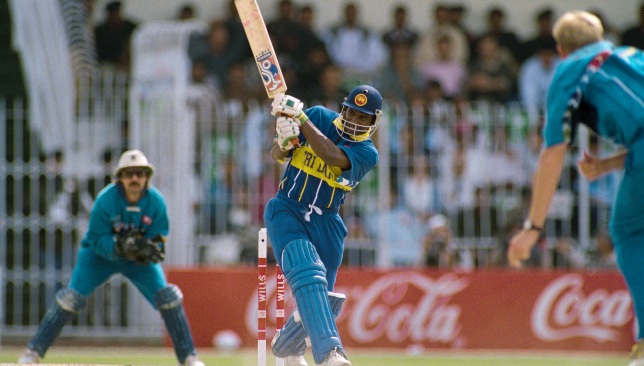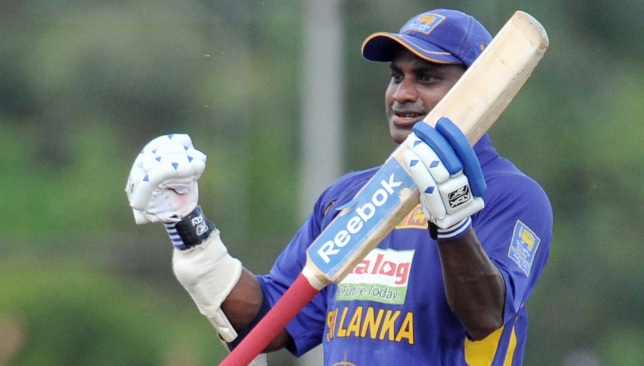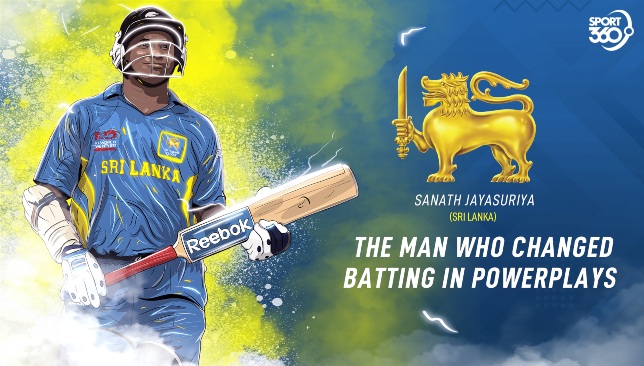
With its origins dating all the way back to the 16th century, cricket has evolved greatly over the years.
From changes in its laws to adopting entirely new formats, the game has always been in a constant state of flux. While cricket’s lawmakers and custodians have played their part in evolving the sport with time, there have also been several players along the way who have created their own impact.
These players have helped change the manner in which the game is approached and their legacy is permanently etched in stone. Whether it be introducing a completely new shot with the bat or bringing a fundamental shift in the game, these players are cricket’s greatest innovators.
There is the great Sir Viv Richards who stood out among his contemporaries in the 1980s with his swagger and brilliance in playing ‘across the line’. Then there is Pakistan spin ace Saqlain Mushtaq who gave off-spinners a new dimension with his mastery of the ‘doosra‘. Who can forget the outrageous genius of Kevin Pietersen and his ‘Switch Hit’.
As we look back on some of these visionaries of the game, one name that burns exceedingly bright is that of Sanath Jayasuriya.
An ODI legend
Very few batsmen, if any, have relished taking on the might of Glenn McGrath in his prime. Hence, for the Australia legend to hail Jayasuriya as one of the toughest opponents he has ever bowled to speaks volumes about the Sri Lankan’s craft and ability.
A career ODI tally of 13,430 runs and 28 centuries doesn’t tell half the story of Jayasuriya’s impact over the course of an international career which spanned nearly 22 years.
Having been handed an international debut in 1989, the early part of Jayasuriya’s career did nothing to indicate that he would eventually transform into an ODI great. For the first few years, the southpaw was very much a bits and pieces player who could bowl a few overs of left-armed orthodox spin and bat lower down the order for Sri Lanka.

In fact, his highest ODI score until October, 1993 was an unbeaten 34. Things only began to look up for Jayasuriya in 1994 when he slammed three half-centuries in a row against Pakistan before registering his maiden one-day ton against New Zealand at the Mangaung Oval.
By the time he finally retired from the game in 2011, the Sri Lankan had become the only player in history to do the double of 10,000 runs and 300 wickets in the ODI format. While it was the 50-over format where Jayasuriya’s greatest success came, he was no mug with the bat when it came to the Test arena either.
A Test average above 40 and 14 tons including a famous triple against India, plus nearly 7,000 runs were testament to the Sri Lanka’s penchant for playing the long innings. Once he got set at the crease, he really liked to go big and has as many as four 150-plus totals to his name in the ODI format.
While playing the long innings was clearly his forte, Jayasuriya also showed the same trait when it came to extending the longevity of his career. More than 4,000 of his ODI runs came after he had turned 35, with the veteran showing no signs of slowing down with age.
The Powerplay game-changer
Jayasuriya’s greatest impact on the ODI game was to change the way teams approached their batting in the powerplay overs. Fielding restrictions were introduced by the ICC in 1992, with only two fielders allowed outside the 30-yard circle for the first 15 overs of the innings. One of the first batsmen to exploit these new rules was New Zealand’s Mark Greatbatch who achieved plenty of success in a pinch-hitting role in the 1992 World Cup.
Despite Greatbatch’s impact in the tournament, the idea of going big in the powerplay did not really catch on for the next few years. The mantra for most of the top ODI sides at the time was still very much about consolidation and preservation in the initial phase of the innings before upping the ante in the death overs. The big hitters in the side were usually packed down the order to allow them to profit from the platform built by the top-order batsmen.
Perhaps taking a cue from Greatbatch’s success in the 1992 World Cup, Sri Lanka promoted Jayasuriya to open the innings in 1994. Still, Jayasuriya was not really an all-out pinch-hitter of the ball in his early days as an ODI opener. Although there were signs that the strategy was changing during Sri Lanka’s tour of Australia in 1995-96, it was in the 1996 World Cup held in the subcontinent that Jayasuriya really took his attacking game to the next level.
With Romesh Kaluwitharana as his opening partner, Jayasuriya took the tournament by storm with his explosive batting in the powerplay. The left-hander took full advantage of the fielding restrictions by unleashing a plethora of lofted strokes over the in-field. Be it his fierce lofted cut shots over the point region or his forceful pull and flick shots towards the leg-side, Jayasuriya’s aggression took every opposition team by surprise.
The widely adopted strategy of building the innings momentum gradually was starting to look foolish as Sri Lanka’s openers took the bowlers to the cleaners. The approach paid handsome dividends with the islanders going all the way to shock the more fancied favourites and lift their maiden World Cup title. They had previously never gone past the preliminary stage of the competition, but Jayasuriya’s destructive belligerence aided them in pulling off an unbeaten fairytale campaign.

Sixteen other batsmen scored more runs than Jayasuriya (221) in the tournament, including Sachin Tendulkar who finished as the top-scorer with 523 runs. Yet, the impact that Jayasuriya created for Sri Lanka with his strike-rate of nearly 132 made all the difference and it was he who bagged the player-of-the-tournament award.
In the group-stage clash between India and Sri Lanka, Tendulkar’s brilliant 137 set up a challenging total of 271 for the hosts in New Delhi, before Jayasuriya’s rapid 79 set up a comfortable six-wicket win for the islanders. In the quarter-final, England’s total of 235 was made to look extremely pedestrian by Jayasuriya who slammed 82 off just 44 deliveries to guide Sri Lanka to a win with nearly 10 overs to spare.
His onslaught at the top allowed the likes of Aravinda de Silva, Asanka Gurusinha and skipper Arjuna Ranatunga to consolidate in the middle-overs, and it proved to be a winning formula in the end for Sri Lanka.
ODI cricket was never the same again after that World Cup with teams realising the value of picking up maximum runs in the powerplay overs. Now, attacking openers are very much the norm in the limited-overs formats with the likes of Virender Sehwag, Adam Gilchrist and David Warner building on the Jayasuriya approach. World Cup 2019 winners England have arguably taken it to another level with their opening partnership of Jonny Bairstow and Jason Roy.
It was a style that Jayasuriya pioneered and kept up till the end of his career, with the Sri Lankan retiring with an overall ODI strike-rate of nearly 92.
“It is always a massive compliment to someone to say they changed the game, and his storming innings in the 1996 World Cup changed everyone’s thinking about how to start innings,” McGrath had to say about Jayasuriya. It is really hard to disagree with that sentiment.